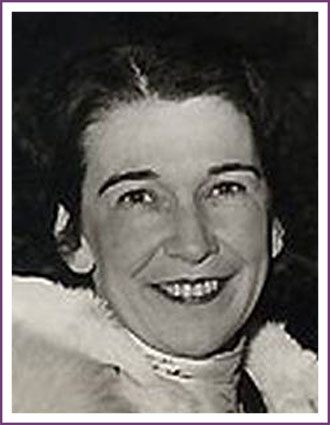MARY JOYCE

• RN
• Dog Mushing
Inducted: 2013
Deceased: 1976
MARY JOYCE
Mary Joyce was a pioneer southeast Alaska entrepreneur and adventurer. During the 1930s, she owned and operated a remote wilderness lodge, became the first woman radio operator in the Territory of Alaska, made a thousand-mile sled dog trip from Juneau to Fairbanks, and was a hunting guide, pilot, flight attendant, nurse, and candidate for Alaska Territorial Representative. She inspired news and magazine articles, poems, plays, books, movies, art and songs.
Joyce helped run the Taku Lodge in the 1930s with “Hack” Smith. The two added buildings, guided hunters and raised sled dogs. In 1935 she operated a radio station from the lodge for Pacific Alaska Airways’ Juneau-to-Fairbanks flight and became the first female radio operator in Alaska. In 1935 Joyce embarked with five dogs on a 1,000-mile, three-month overland trek to represent Juneau at the Fairbanks Winter Carnival. She also became one of the first female pilots in Juneau.
Because of her knowledge of the remote country, Joyce hauled radio equipment by dog team for the Navy as it built defenses during World War II, was a consultant for construction of the Alaska-Canada Highway, taught survival skills to troops, and helped develop a new air route from New York to Fairbanks.
In the 1940s, Joyce sold her lodge and moved to Juneau where she was a nurse at St. Ann’s Hospital and where she later purchased the Top Hat and Lucky Lady saloons. She led the statehood parade in Juneau and cut the ribbon for the first Iditarod trail race in 1973.
View Extended Bio